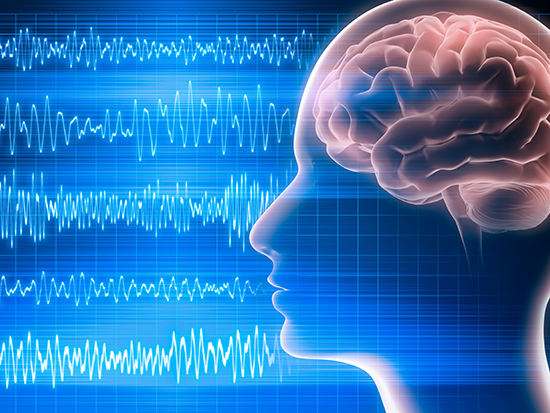 Advanced warning of an elevated risk for seizures could help patients take protective measures to minimize the effects, or possibly even stop the seizure before it begins.New research from the University of Alabama at Birmingham suggests some epileptic seizures can be predicted 30-45 minutes before they begin. The findings, published in NEJM Evidence, show that, for those with temporal lobe epilepsy, measuring brain activity in the thalamus through electroencephalography, or EEG, may be a reliable predictor of increased risk of seizures.
Advanced warning of an elevated risk for seizures could help patients take protective measures to minimize the effects, or possibly even stop the seizure before it begins.New research from the University of Alabama at Birmingham suggests some epileptic seizures can be predicted 30-45 minutes before they begin. The findings, published in NEJM Evidence, show that, for those with temporal lobe epilepsy, measuring brain activity in the thalamus through electroencephalography, or EEG, may be a reliable predictor of increased risk of seizures.
The investigators, in the Department of Neurosurgery in the UAB Marnix E. Heersink School of Medicine, developed a novel way to identify brain activity that could be predictive of the onset of a seizure. In 15 patients undergoing intracranial EEG evaluation for potential epilepsy surgery, EEG measurements in two areas of the brains were evaluated specifically, combined with a machine learning protocol to analyze the data. Thirteen of the 15 study subjects saw increased brain activity, possibly predictive of a seizure, at least 45 minutes prior to seizure onset. Two of the subjects had a 30-minute window before seizure onset.
“Many patients have warning signs of an impending seizure a few seconds or minutes before it occurs,” said Adeel Ilyas, M.D., resident in Neurosurgery and first author. “But a warning of a likely seizure 30 to 45 minutes before it strikes gives an individual time to take precautions, such as taking anti-seizure medications, getting to a safe place or curtailing activities that could be potentially dangerous.”
Traditionally, brain activity in epilepsy is classified into interictal, ictal and postictal states. The ictal state is from the time of seizure onset until the end of seizure activity, while postictal is the recovery stage. Interictal, or the time between seizures, is now thought to include preictal and proictal states. Preictal is the few moments prior to seizure onset, when the first warning signs that herald seizure onset may be noted. Proictal marks increased brain activity across a longer time scale.
“The proictal state is the key time frame for prediction,” Ilyas said. “An analogy is that lightning generally doesn’t strike from a clear sky. Think of proictal as the stormy weather where a lightning strike is much more probable. Knowing when someone with epilepsy enters a proictal state is the advanced warning that a seizure is likely.”
Ilyas and senior author Kristen Riley, M.D., measured brain activity in two locations, standard intracranial EEG with an additional lead placed in the limbic thalamus. They broke down the data gained into 10-minute blocks and used machine learning to look for subtle changes in brain activity.
“Machine learning is capable of understanding the intricacies of differences in EEG measurements that the human eye cannot,” Ilyas said. “That allows us to recognize when someone is entering that period of stormy weather and a seizure may be imminent.”
Ilyas says, in addition to an early warning system, the ability to identify a proictal state could at some point in the future provide means for stopping a seizure before it begins.
“We already have devices to implant electrodes in the brain to provide neural stimulation for conditions such as epilepsy and Parkinson’s disease,” he said. “More study is needed, but this type of neuromodulation could be refined to stimulate the brain to prevent a seizure once a proictal state is detected. The ultimate goal could be to implant devices in the right patients to provide the early warning, along with the means to stop the seizure and return to clear skies.”